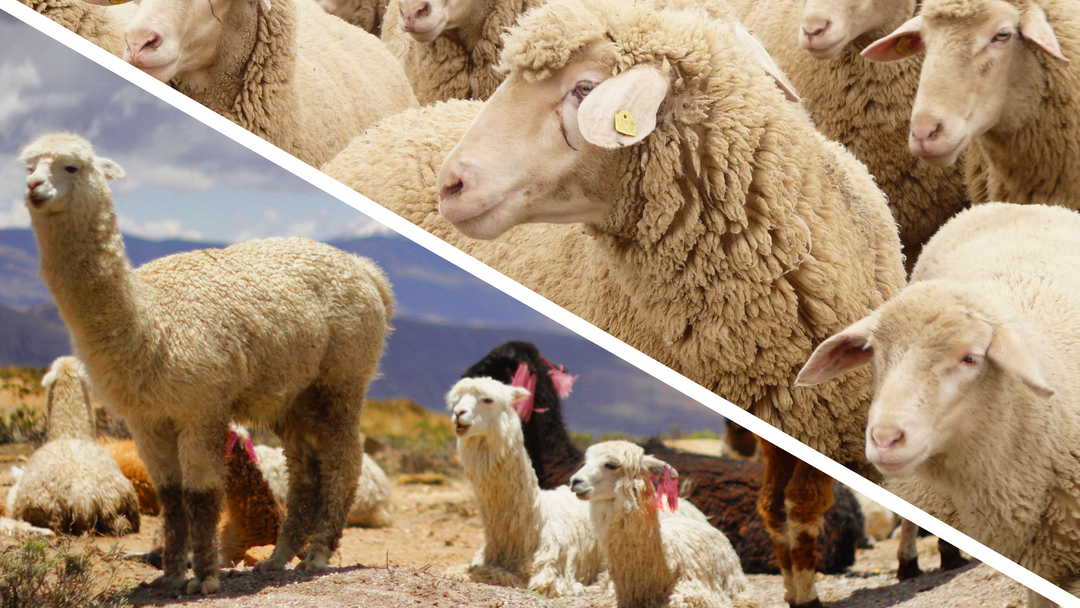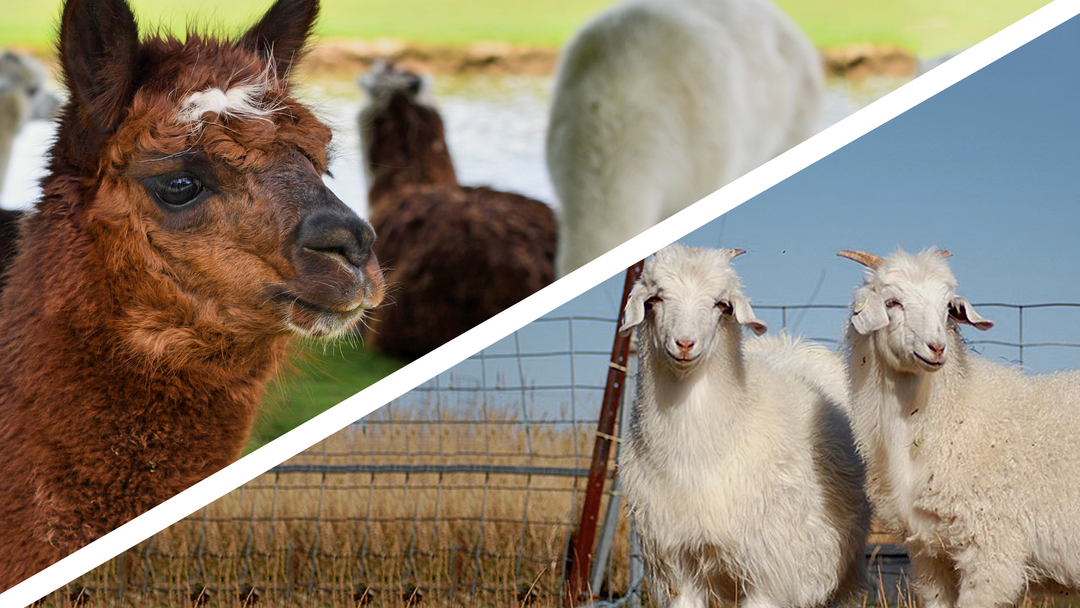The production of textiles has repeatedly made negative headlines in recent years. The use of synthetic materials and the use of resources such as water and energy lead to considerable environmental pollution. But there are alternatives that are sustainable and environmentally friendly. One of them is the production of alpaca products. In this article, we will take a closer look at how the production of alpaca products compares to other materials in terms of water consumption and CO2 emissions, and why alpaca products are a profitable choice for anyone who wants to reduce their carbon footprint. And if you want to learn more about alpaca products, we invite you to read our other blog "All about alpaca products". There you will learn everything about these wonderful products, from their origin and history to the different types of alpaca wool and their uses.
Water consumption in comparison

The production of alpaca wool is not only water-saving compared to cotton, but also particularly resource-saving. Alpacas, which are kept in their natural habitat and in freedom, do not use agricultural land or water reserves intended for human use or food production. This is because their natural habitat is at altitudes above 3500 metres.
In comparison, the production of one kilogram of cotton requires up to 10,800 litres of water and a large amount of agricultural land. Thus, the production of alpaca wool has no impact on the access to water and natural resources of local communities.
CO2 emissions in comparison

Alpaca products not only offer an excellent alternative to conventional textiles in terms of water conservation, but also in terms of CO2 emissions. As camelids, alpacas require significantly fewer resources than ruminants, resulting in lower greenhouse gas emissions. This makes alpaca products a sustainable choice for anyone looking to reduce their carbon footprint.
Sustainable care and use
Not only is the production of alpaca products environmentally friendly, but also the care and use of these products contribute to a sustainable lifestyle. Thanks to their long life and resistance to dirt, alpaca products require less frequent cleaning, resulting in lower water consumption and CO2 emissions. Using natural materials such as alpaca wool instead of synthetic materials also helps to reduce CO2 pollution.
Handmade quality
Another important aspect of the sustainability of alpaca products is that many of them are handmade. This means that they are produced without the use of machinery, which results in a significantly lower CO2 impact by eliminating the energy consumption of production machinery. Overall, choosing alpaca products is a winning choice for both the environment and the consumer. They are sustainable, durable and help reduce the carbon footprint.
Comparison of impacts on agriculture

Alpacas have an impressively small impact on their habitat. They are among the few animals that produce fibre and can migrate in the mountains on a large scale without damaging it and causing desertification.
Alpacas do not damage pastures when grazing
Alpacas only nibble the tops of grasses and other plants; they do not pull the plants out of the ground, which results in less disturbance to the vegetation and allows it to grow back quickly. By grazing on different areas each day, the pasture grows back again and again and can be used by the same herd over and over again.
Alpaca feet do not damage the grazing area
Unlike goats and sheep, which have sharp hooves that damage grazing areas and the ground, alpacas have two toes with nails on top and a soft underside on each foot that minimises their impact on grazing areas. In other words, the grass system is not disturbed by alpacas, preserving soil and their habitat.
Alpacas are highly efficient and don't require much food
This efficiency of alpacas is particularly remarkable when you consider that they require much less food intake than most other wool-producing livestock. Cashmere goats, for example, require at least twice the amount of dry grass to produce 1 kg of clean wool. Equally important, mega-herds of cashmere goats have an incredibly destructive impact on ecosystems. So by using alpaca products, we are not only helping to reduce our carbon footprint, but also conserving natural resources and preserving the environment.
Conclusion
Alpaca products are an excellent environmental choice as they are much more sustainable than conventional textiles in terms of water consumption, CO2 emissions and land use.
Not only do they offer a sustainable alternative, but they also support the local economy and conservation of the alpacas in South America where they are made. If you are looking for high-quality and environmentally friendly alpaca products, handmade products from South America are an excellent choice.
FAQ's
How does the production of alpaca products compare to other materials in terms of water consumption?
The production of alpaca wool is extremely water-efficient compared to materials such as cotton. Alpacas, raised in the wild in the Andes, do not occupy agricultural land or water resources needed for human consumption or food production. They live at altitudes above 3500 metres, where they make efficient use of natural resources.
How does the production of alpaca products compare to other materials in terms of CO2 emissions?
Alpaca products are an excellent choice in terms of CO2 emissions. Alpacas require less greenhouse gas emissions than other livestock due to their efficient feed conversion and low resource requirements. This makes alpaca products a sustainable option for those who want to reduce their carbon footprint.
What impact do alpacas have on the environment in terms of land use?
Alpacas have a minimal impact on their environment. They do not damage grazing areas as they only nibble off the tops of grasses and plants without pulling them out of the ground. Their gentle hooves do not damage grazing areas and help to maintain the habitat. Alpacas are also extremely efficient and require little feed compared to other wool-producing livestock.
Why are handmade alpaca products more sustainable?
Handmade alpaca products are more sustainable because they are produced without the use of energy-intensive machinery. This results in a lower carbon footprint and helps to protect the environment. Choosing handmade alpaca products therefore supports sustainability.
Why are alpaca products an environmentally friendly choice for consumers?
Alpaca products are environmentally friendly because they are much more sustainable in terms of water consumption, CO2 emissions and land use compared to traditional textiles. Not only do they offer a sustainable alternative, but they also contribute to the local economy and the protection of alpacas in South America.











